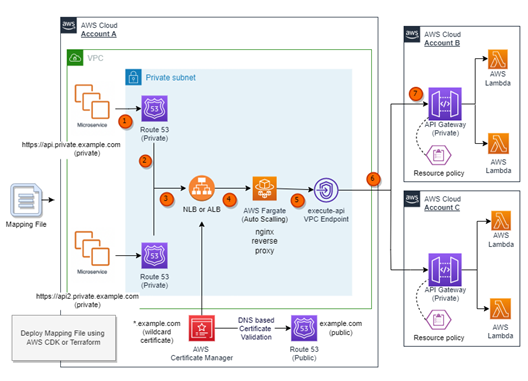AWS Compute Blog
Testing AWS Lambda functions with AWS SAM remote invoke
Serverless developers are looking for the most efficient way to test their applications in the AWS Cloud. They want to invoke an AWS Lambda function quickly without having to mock security, external services, or other environment variables. This blog shows how to use the new AWS SAM remote invoke feature to do just that.
Deploying state machines incrementally with versions and aliases in AWS Step Functions
This post is written by Peter Smith, Principal Engineer for AWS Step Functions This blog post explains the new versions and aliases feature in AWS Step Functions, allowing you to run specific revisions of the state machine instead of always using the latest. This allows for more reliable deployments that help control risk, and provide […]
Deploying an automated Amazon CloudWatch dashboard for AWS Outposts using AWS CDK
This post is written by Enrico Liguori, Networking Solutions Architect, Hybrid Cloud and Sumeeth Siriyur, Sr. Hybrid Cloud Solutions Architect. AWS Outposts is a fully managed service that brings the same AWS infrastructure, services, APIs, and tools to virtually any data center, colocation space, manufacturing floor, or on-premises facility where it might be needed. With Outposts, […]
Secure Connectivity from Public to Private: Introducing EC2 Instance Connect Endpoint
This blog post is written by Ariana Rahgozar, Solutions Architect, and Kenneth Kitts, Sr. Technical Account Manager, AWS. Imagine trying to connect to an Amazon Elastic Compute Cloud (Amazon EC2) instance within your Amazon Virtual Private Cloud (Amazon VPC) over the Internet. Typically, you’d first have to connect to a bastion host with a public […]
Selecting cost effective capacity reservations for your business-critical workloads on Amazon EC2
This blog post is written by Sarath Krishnan, Senior Solutions Architect and Navdeep Singh, Senior Customer Solutions Manager. Amazon CTO Werner Vogels famously said, “everything fails all the time.” Designing your systems for failure is important for ensuring availability, scalability, fault tolerance and business continuity. Resilient systems scale with your business demand changes, prevent data […]
Ruby 3.2 runtime now available in AWS Lambda
Get started building with Ruby 3.2 today by making necessary changes for compatibility with Ruby 3.2, and specifying a runtime parameter value of ruby3.2 when creating or updating your Lambda functions.
Implementing custom domain names for Amazon API Gateway private endpoints using a reverse proxy
This blog post demonstrates a solution that allows customers to utilize their private endpoints securely with API Gateway across AWS accounts and within a VPC network by using a reverse proxy with a custom domain name. The solution offers a simplified approach to manage the mapping between private endpoints with API Gateway and custom domain names, ensuring seamless connectivity and security.
Developing a serverless Slack app using AWS Step Functions and AWS Lambda
This blog was written by Sam Wilson, Cloud Application Architect and John Lopez, Cloud Application Architect. Slack, as an enterprise collaboration and communication service, presents opportunities for builders to improve efficiency through implementing custom-written Slack Applications (apps). One such opportunity is to expose existing AWS resources to your organization without your employees needing AWS Management […]
Reserving EC2 Capacity across Availability Zones by utilizing On Demand Capacity Reservations (ODCRs)
This post is written by Johan Hedlund, Senior Solutions Architect, Enterprise PUMA. Many customers have successfully migrated business critical legacy workloads to AWS, utilizing services such as Amazon Elastic Compute Cloud (Amazon EC2), Auto Scaling Groups (ASGs), as well as the use of Multiple Availability Zones (AZs), Regions for Business Continuity, and High Availability. These […]
Best practices to optimize your Amazon EC2 Spot Instances usage
This blog post is written by Pranaya Anshu, EC2 PMM, and Sid Ambatipudi, EC2 Compute GTM Specialist. Amazon EC2 Spot Instances are a powerful tool that thousands of customers use to optimize their compute costs. The National Football League (NFL) is an example of customer using Spot Instances, leveraging 4000 EC2 Spot Instances across more […]









